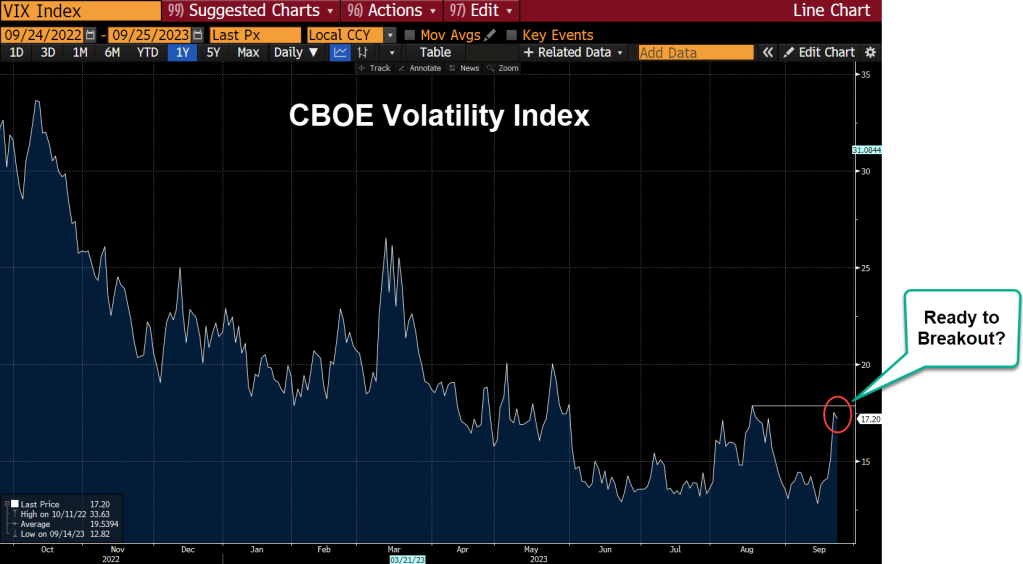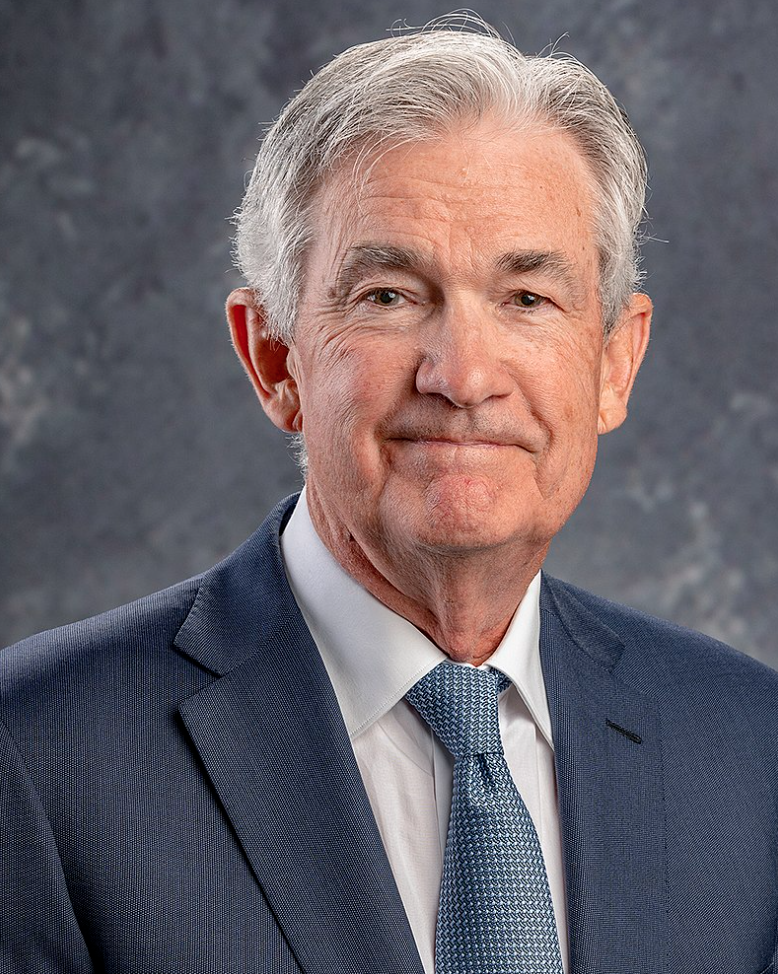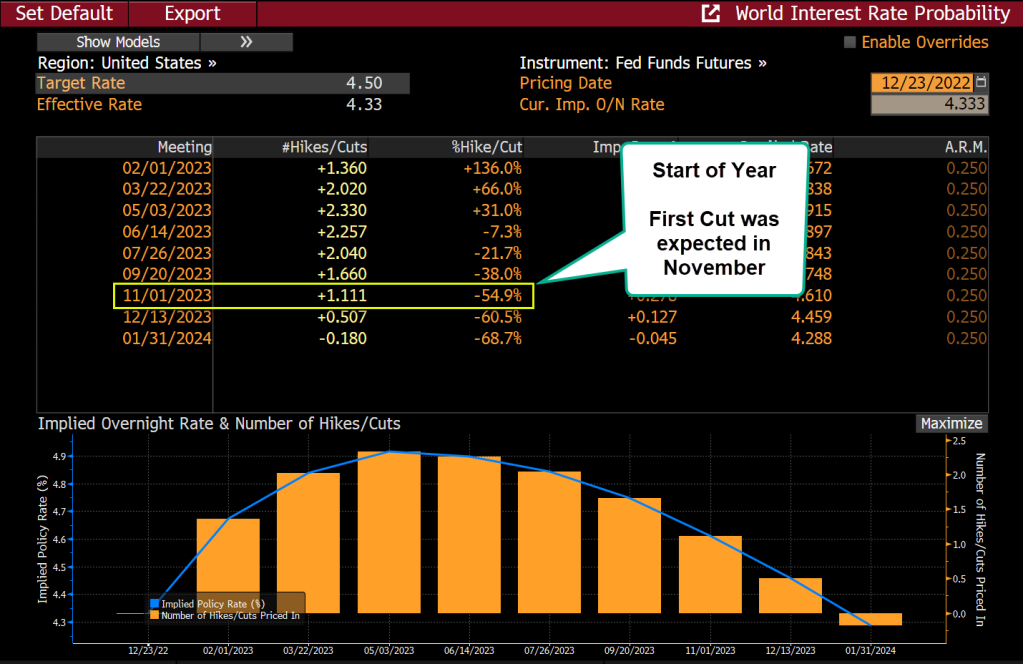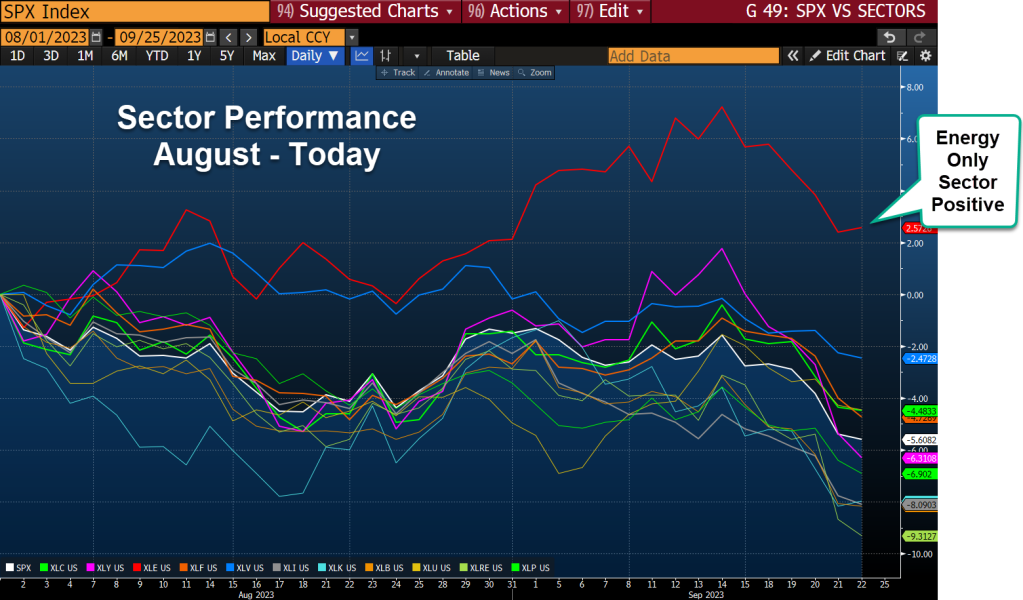 September
26
September
26
Tags
The Fed moved the goalposts – How to play and win
By David Nelson, CFA
We are coming into the last week of September and investors are facing some tough choices on how to position for the final quarter of 2023. On the heels of 3 weekly declines traders are bracing for a breakout in the VIX, (CBOE Volatility Index) forcing even lower prices or a reversion to the mean, relieving oversold conditions letting stocks take back some of the losses.

Bloomberg Data
I can’t pretend to know what’s coming this week, but I can make decisions on how to position my team for the final quarter of the year. New information comes in and you’re forced to adapt. You roll with it.
When the most important market player on the planet speaks, investors are forced to listen. Fund managers have spent the last several trading days dumping exposure or at the very least repositioning for higher rates that could be with us longer than we thought.
 On Wednesday, Powell and the Federal Reserve moved the goal posts indicating that Fed rate cuts are now delayed another 6 months. Monetary policy is up against fiscal policy so out of control it could even be longer than that. In fact, if they do cut rates, it could be for all the wrong reasons.
On Wednesday, Powell and the Federal Reserve moved the goal posts indicating that Fed rate cuts are now delayed another 6 months. Monetary policy is up against fiscal policy so out of control it could even be longer than that. In fact, if they do cut rates, it could be for all the wrong reasons.
Welcome to the Money Runner. I’m David Nelson.
Tactical strategies which are generally trend following have more than likely put the defense on the field either adding to short ETFs or raised cash. Stock managers can do the same or factor tilt their portfolios to what’s working now. On the tactical side there is little choice but on stock strategies the latter keeps me in the game and out of the business of market timing.
To be fair, the goal posts have been moving since the start of the year. We came into 2023 with an expectation that the Fed would take their foot off the brake by November. In fact, by March on the heels of a mini banking crisis that expectation quickly moved up to July.

Bloomberg Data
Since then, week by week the goal of a Fed ready to slowly retreat to neutral moved out further with last week’s FOMC decision and press conference causing the most damage. Overnight, any chance of a 100bps of easing next year evaporated, putting into question if we could even expect 50.

Bloomberg Data
As you would expect large cap secular growth took it on the chin always the first to fall when the risk-free rate moves in the wrong direction.

Bloomberg Data
10-year rates broke to a new cyclical high forcing investors back to the fundamental reality that the first input of most valuation models is the risk-free rate.
Throw in a government shutdown likely at the end of this month, we were lucky the S&P 500 was only down just shy of 3%.

Bloomberg Data
Is the Fed done?
I’m convinced the Fed is done hiking and if not, they are very close to target. Having said that, what is becoming increasingly uncertain is how long rates will stay in restrictive territory. That uncertainty forces change, a change that actually started a few months ago.

Bloomberg Data
Suddenly value and quality are important again. Last year one of the most important factors for investors was Free Cash Flow and Dividends, both of which are today getting a lot of attention.
No, it doesn’t mean you need to sell all your Microsoft (MSFT) and Apple (AAPL), but it does mean you should make room for sectors and stocks that could balance out what is largely a tech and growth dominated index.
Washington

Without question the coming election will focus heavily on Washington spending as well as ballooning deficits and debt. However, there is little that can be accomplished without a bipartisan effort. Even in a unified government where one-party controls all the major branches, politicians are up against a Washington bureaucracy so entrenched cutting spending will be difficult if not impossible.
Depending on the source there are approximately 2.1 million Civilian Employees working in the Federal Government. Of those only 4000 are appointed by the President. Any incoming President even with a sweep of both the House and the Senate would still be up against more than 400 Federal agencies each with a budget and all wanting a bigger budget than they had the previous year.
What could force the Fed to cut?
The most obvious would be a recession. Much has been made about the Fed engineering a soft landing, a scenario I have not endorsed. The more likely way this plays out is sometime next year the economic drag of high rates will force the inevitable.

Bloomberg Data
Remember when the Fed started hiking rates in March of last year the Fed Funds real rate, which is the fed funds rate minus inflation was -800 basis points. While it feels like the Fed has been restrictive for 18 months the truth is that it has only been six.
Think of it this way. Picture Powell in a fireman’s outfit dousing an inflation fire. Only coming out of the hose isn’t water but gasoline. With the Fed Funds real rate at -800 basis points each hike slowly cut off the amount of fuel coming out of the hose until March this year when the gas finally shut off.
Since then, each hike has pushed us further into restrictive territory and the economy and the consumer are just starting to feel the pain.
Just as the fed funds real rate started to go positive in March banks started to rollover. No question employment and the consumer have been resilient but now as Covid stimulus has run its course cracks are starting to develop.

Bloomberg Data
The toxic mix of higher inflation and rising consumer interest rates which in turn drives increased delinquencies eventually will take its toll.
Yes, many of you will say nothing can stop the U.S. consumer. That’s sounds like one of those sayings that works right up until the time it doesn’t. There comes a point where even the all-powerful U.S. consumer hits a wall, a wall that is likely just around the next turn.
So, what should you do?
If you haven’t already, bring the average PE multiple down on your portfolio. If you don’t have cash, make some room, and pick up some stocks with some of the above attributes. High Free Cash Flow and dividends will also help.
Even if your favorite names bounce this week start planning ahead. It won’t be surprising to see a move higher in most of the large cap secular players. Coming into this week most are sitting at the bottom of their ranges. Reversion to the mean is a powerful force and without question there has been some intense selling.
If you’re balanced already then weather the storm. There is still a ton of cash on the sidelines waiting to come in offering some support if in fact the market falls further.
Here are some trades to think about
The administration’s push against large cap pharma and the healthcare sector has been well telegraphed but like I said earlier; there are limits to what the executive branch can accomplish on its own. We still have a divided government. Healthcare is a growth at the right price sector offering reasonable valuations, free cash flow and in most cases dividends.
The very fact that utilities are starting to outperform is also a red flag. And finally, energy has been the leading sector for months offering high free cash flow yields and dividends. Oil isn’t in the sixties anymore; winter is coming, and Saudi Arabia has regained its crown as the swing producer.

Bloomberg Data
Even within technology there are a lot of stocks not trading at nosebleed valuations. Most will benefit from the boom in A.I.
I am not going to give you specific stocks to buy.
First, by the time you see this podcast the story may have changed, or the opportunity has passed.
Second, it really needs to be a personalized one on one conversation with me or someone on my team.
The coming months will no doubt test our resolve, our strategies and our foresight. We are the architects of our financial futures but with that responsibility comes the necessity to push back and question our decisions each and every day.
I’m David Nelson and this is the Money Runner.
*The above is a transcript from this week’s Money Runner podcast
**At the time of this post some funds managed by David were long MSFT & AAPL